Compiled By: Mirza Rohail B
©Our leader – Musharraf
All this is all the more amazing when one considers that just six years ago, Pakistan was on the verge of bankruptcy, with only a little more than $1bn in foreign exchange reserves and its stock market teetering at 1,000 points (worth $5 billion only) and foreign debt servicing at 65% of GDP. Our exports were at a pitiful $7.5 billion.
The once ever-declining rupee stood stable at around 60-61 to a dollar since Musharraf took over. Of the 184 member countries of the IMF, Pakistan’s rate of economic growth 7% is one of the best in the world. The Karachi stock market is now above 13,000 points and worth around $65 billion. Now foreign debt servicing has lowered to become 28%. Our exports increased to become $18 billion.
1. Pakistan economy is among the fastest growing economies in the world as its economy has reached the size of $170 billion from a mere $70 billion in 1999. Pakistan attracted a record FDI of $8.6 billion in 2007-08.
2. 2007: National revenues had swelled from Rs 308 billion during 1988-99 to around Rs 800bn in 2007; and FBR estimates now 2.8 million Income Tax payers.
Year Total CBR Direct Indirect Custom Sales Central excise
1998-99 308.5bn 110.4bn 198.1bn 65.3bn 72bn 60.8bn
2005-06 712.5bn 224.6bn 487.9bn 138.2bn 294.6bn 55bn
2008-09 810.3bn 305bn – 105.3bn 319.3bn 80.5bn (2008-09 Progressive)
3. Public sector development program (PSDP) has also grown from Rs 80 billion in 1999; to Rs 520 billion in 2007 and increased further to Rs 549.7 billion in 2008.
4. FACT: The rate of growth in Pakistan Large Scale Manufacturing (LSM) is at a 30-year high. Construction activity is at a 17-year high.
LSM: 1999-00 was 1.5% and 2004-05 was 19.9% and 2006-07 was 8.6% and 2007-8 is 5%.
5. FACT: The Infrastructure Industries Index, which measures the performance of Seven industries, i.e. Electricity generation, Natural gas, Crude oil, Petroleum products, Basic metal, Cement and coal, has recorded a 26.2 percent growth in Industrial sector of Pakistan.
6. FACT: Jan 14: Pakistan now has a total of 245,682 Educational institutions in all categories, including 164,579 (i.e. 67 per cent) in the public sector and 81,103 (i.e. 100 per cent) in the private sector, reports the National Education Census (NEC-2005). The census — jointly conducted by the Ministry of Education, the Academy of Educational Planning and Management (AEPAM) and the Federal Bureau of Statistics (FBS) — reveals that the number of private-sector institutions has increased from 36,096 in 1999-2000 to 81,103 in 2005, i.e. by 100 per cent. 45,007 Educational Institutions have increased in Musharraf Era.
7. FACT: Pakistan is 3rd in world in Banking profitability, a report of IMF said. On the IMF chart, Pakistan’s banking profitability is on third position after Colombia and Venezuela. On the IMF chart India is on 36th position and China is on 40th position. Pakistan’s Banking sector turned profitable in 2002. Their profits continued to rise for the next five years and peaked to Rs 84.1 ($1.1 billion) billion in 2006
8. 11 May 2009: By producing 7.746 tonnes of gold during the last five years – 2004 to 2008 – Pakistan joins the ranks of gold producing countries. According to the data with the Saindak Metal Limited – during the last five years – Pakistan has produced 86,013 tonnes of copper, 7.746 tonne gold and 11.046 tonne silver, besides the production of 14,482 tonnes of magnetite concentrate (iron), bringing in a total of $633.573 million.
9. In 1999 what we earned as GDP: we used to give away 64.1 % as foreign debt and liabilities. Now in 2006, what we earn as GDP: we give ONLY 28.3 % as foreign debt and liabilities. Now we are SAVING 35 % of Our GDP for economic growth.
According to Department of Finance, External debt & liabilities (EDL) and DAWN:
1988 – $ 18 bn —–> 1990 – $ 20.5 bn —–> 1999 – $ 38.9 bn —–> 2000 – $ 35.48 bn —–> 2001 – $ 37.2 bn —–> 2002 – $ 34.8 bn —–> 2003 – $ 35.4 bn —–> 2004 – $ 35.3 bn —–> 2005 – $ 35.8 bn —–> 2006 – $ 37.6 bn —–> 2007 – $ 40.5 bn —–> 2008 – $ 45.9 bn —–> 2009 – $ 50 bn
10. According to Economic Survey 2005. Poverty in Pakistan in 2001 was 34.46%. And, now after 7 years of Musharraf; Poverty in 2005 was 23.9%. Poverty DECREASED by 10.56%. Overall, 12 million people have been pushed out of Poverty in 2001 -2005!
11. Literacy rate in Pakistan has increased from 45% (in 2002) to 53% (in 2005). And, Education now receives 4% of GDP and English has been introduced as compulsory subject from grade 1.
12. 12-4-07: The IT industry, which was virtually non-existent seven years ago, has grown to be worth $2 billion of which $1 billion is export related. It rregistered a 50% growth. 55 foreign IT companies have already entered the market. Now the sector employed 90,000 professionals.
13. 30-1-08: The government has decided to set up a modern hospital cum Medical University in collaboration with the Harvard Medical International, USA, at a cost of Rs 18 billion. The university will be built at the Defence Housing Authority (DHA), Islamabad. A total of 2,500 students will be taught at the graduate level, while additional 600 seats will be available for postgraduate research courses.
14. Nov 2006: President Musharraf says that Pakistan will set up Nine Engineering World Class Science and Technology Federal Universities by 2008 with foreign assistance. He said the institutions of higher learning would be established in collaboration with Italy, South Korea, Japan, France, Sweden, Netherlands, Germany, Austria and China. The Cost of building these Foreign Universities will be above Rs 96.5 billion.
The Vice Chancellors, Heads of department, Professors and Faculty of the planned university will be from these Foreign Universities; while the Examination system, Quality assurance followed and the Degree awarded will also be from these Foreign Universities.
15. Government has approved to give at least 4% of GDP to Education in 2007 budget.
16. In 1999-2000 there were 31 Public Universities. Now 2005-2006 there are 49 Public Universities. HEC setup 47 Universities.
a) Air University (established 2002)
b) Institute of Space technology, ISB (established 2002)
c) Sardar Bahadur Khan Women University, Quetta (established 2004)
d) University of Science & Technology, Bannu (established 2005)
e) University of Hazara (founded 2002)
f) Malakand university, Chakdara (established 2002)
g) Karakurum International university, Gilgit (established 2002)
h) University of Gujrat (established 2004)
i) Virtual University of Pak, Lahore (established 2002)
j) Sarhad University of IT, Peshawar (established 2001)
k) National Law University, ISB (2007)
l) Media University, ISB (2007)
m) University of Education, Lahore (2002)
n) Lasbella University of Marine Sciences, Baluchistan (2005)
o) Baluchistan University of IT & Management, Quetta (2002), etc.
17. 6-member delegation of Australian Department of Education, Science & Technology and AusAID, is visited Pakistan on the request of PM Shaukat Aziz to help Pakistan in its efforts to realign its TVET (Technical and Vocational Education and Training) according to the market needs. Chairman NAVTEC Altaf Saleem informed the delegation about NAVTEC plans to increase the capacity to train one million people annually by 2010 from the present annual capacity of 320,000.
Continue reading →

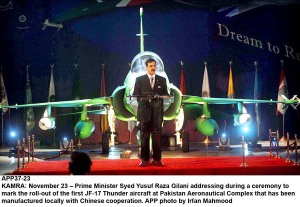

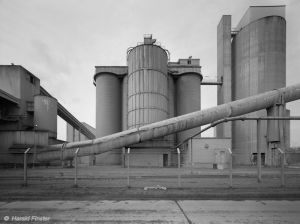 plants with a total capacity of 0.5 million tons. Some expansion took place in 1956-66 but could not keep pace with the economic development and the country had to resort to imports of cement in 1976-77 and continued to do so till 1994-95. The industry was privatized in 1990 which led to setting up of new plants. Although an oligopoly market, there exists fierce competition between members of the cartel today.
plants with a total capacity of 0.5 million tons. Some expansion took place in 1956-66 but could not keep pace with the economic development and the country had to resort to imports of cement in 1976-77 and continued to do so till 1994-95. The industry was privatized in 1990 which led to setting up of new plants. Although an oligopoly market, there exists fierce competition between members of the cartel today.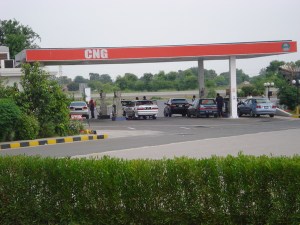 Compiled by:
Compiled by: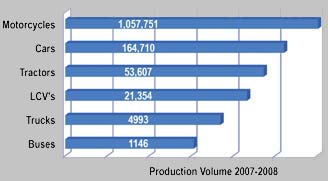 opportunities. The total contribution of Auto industry to GDP in 2007 is 2.8% which is likely to increase up to 5.6% in the next 5 years. Total gross sales of automobiles in Pakistan were Rs.214 billion in 2006-07 or $2.67 billion. The industry paid Rs.63 billion cumulative taxes in 2007-08 that the government has levied on automobiles.
opportunities. The total contribution of Auto industry to GDP in 2007 is 2.8% which is likely to increase up to 5.6% in the next 5 years. Total gross sales of automobiles in Pakistan were Rs.214 billion in 2006-07 or $2.67 billion. The industry paid Rs.63 billion cumulative taxes in 2007-08 that the government has levied on automobiles.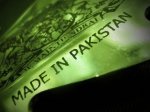


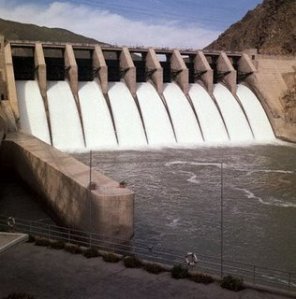 projects worth billions of dollars. These talks are taking place in Islamabad between visiting German Minister for Economic Co-operation and Development Ms. Heidemaire Wiegoreak Zeul and Pakistani Prime Minister’s Adviser on Finance Mr. Shaukat Tarin, according
projects worth billions of dollars. These talks are taking place in Islamabad between visiting German Minister for Economic Co-operation and Development Ms. Heidemaire Wiegoreak Zeul and Pakistani Prime Minister’s Adviser on Finance Mr. Shaukat Tarin, according